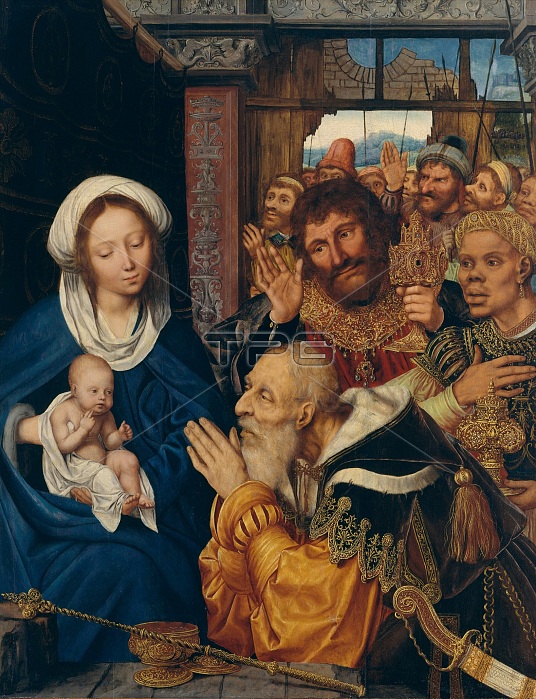
The Adoration of the Magi by Quentin Metsys, oil on wood, 1526. This intentionally claustrophobic composition is characteristic of the Antwerp Mannerist style of the first half of the 16th century. The scene is viewed up close, with half-length, gesticulating figures separated from the viewer by a fictive ledge. Finely wrought goldsmith work - such as was actually produced for the opulent taste of the cosmopolitan community in Antwerp - abounds. The caricature-like features of the Magi and their retinue reveal the artist's interest in the extreme physiognomic types popularized by Leonardo da Vinci and made available through prints. It was this interest in the psychology of physiognomy that made Metsys a gifted portraitist. The Magi, also referred to as the (Three) Wise Men or (Three) Kings were, a group of distinguished foreigners who visited Jesus after his birth, bearing gifts of gold, frankincense and myrrh. They are regular figures in traditional accounts of the nativity celebrations of Christmas and are an important part of Christian tradition.
| px | px | dpi | = | cm | x | cm | = | MB |
Details
Creative#:
TOP22167684
Source:
達志影像
Authorization Type:
RM
Release Information:
須由TPG 完整授權
Model Release:
N/A
Property Release:
No
Right to Privacy:
No
Same folder images:

 Loading
Loading